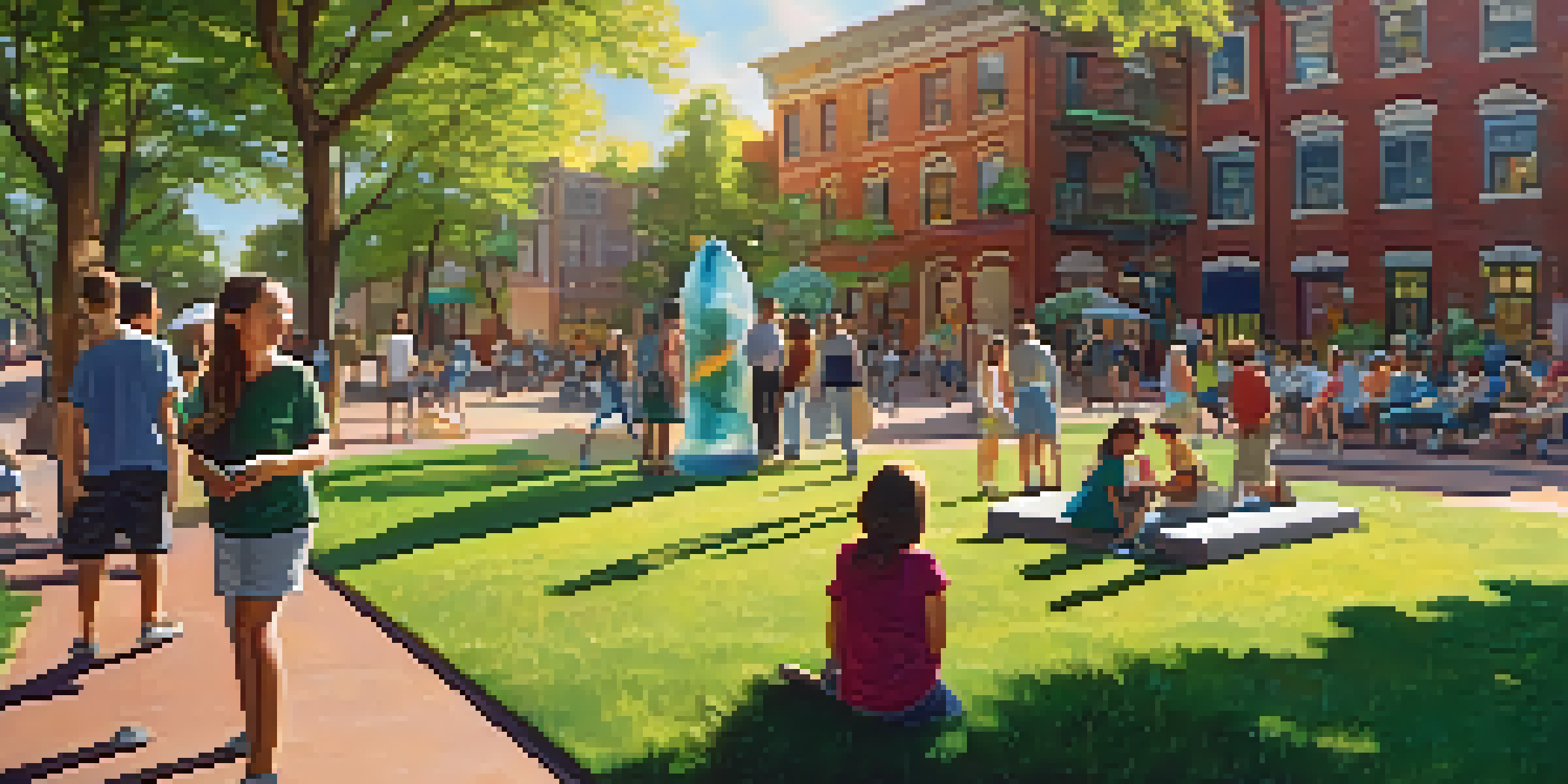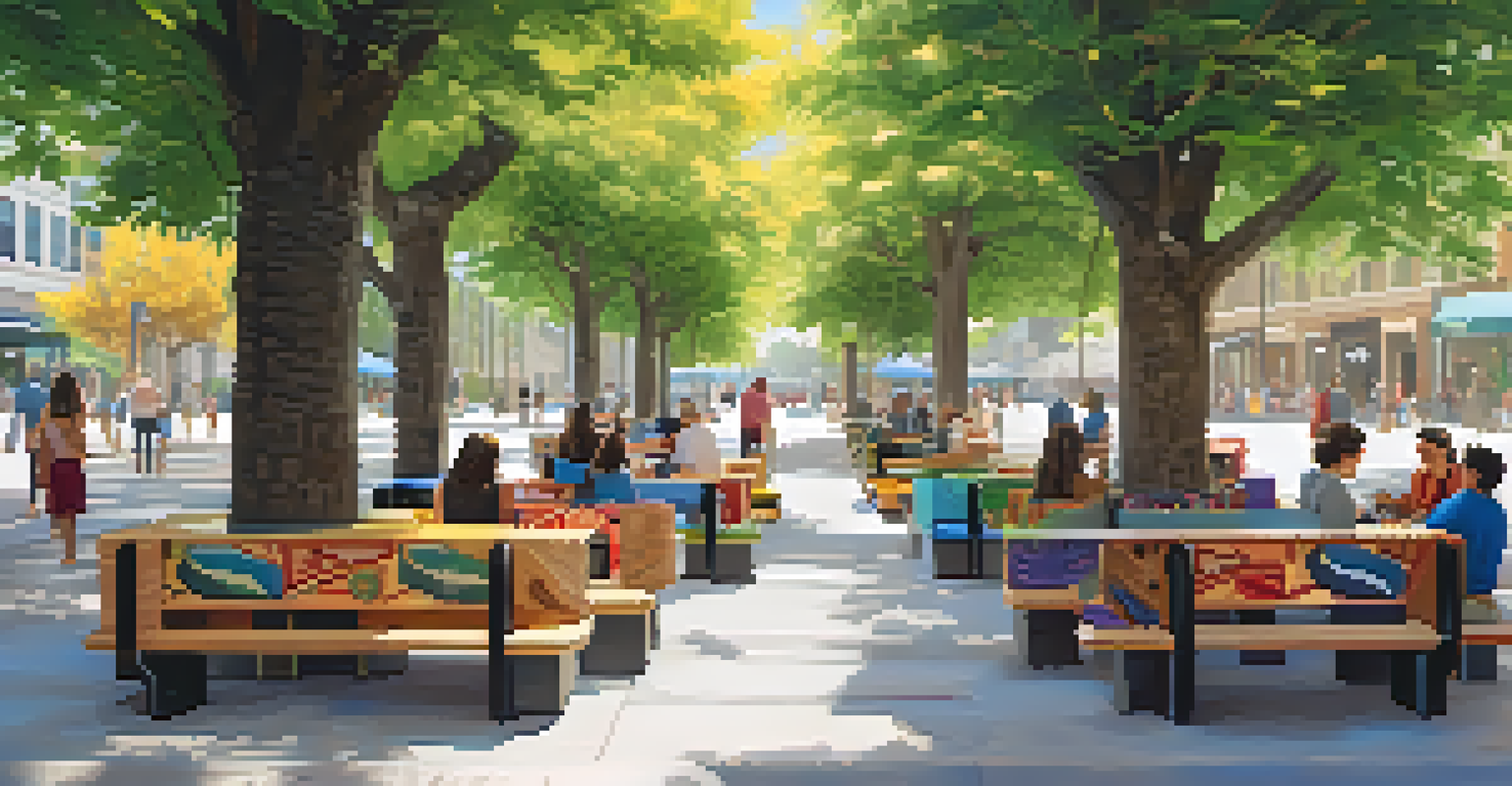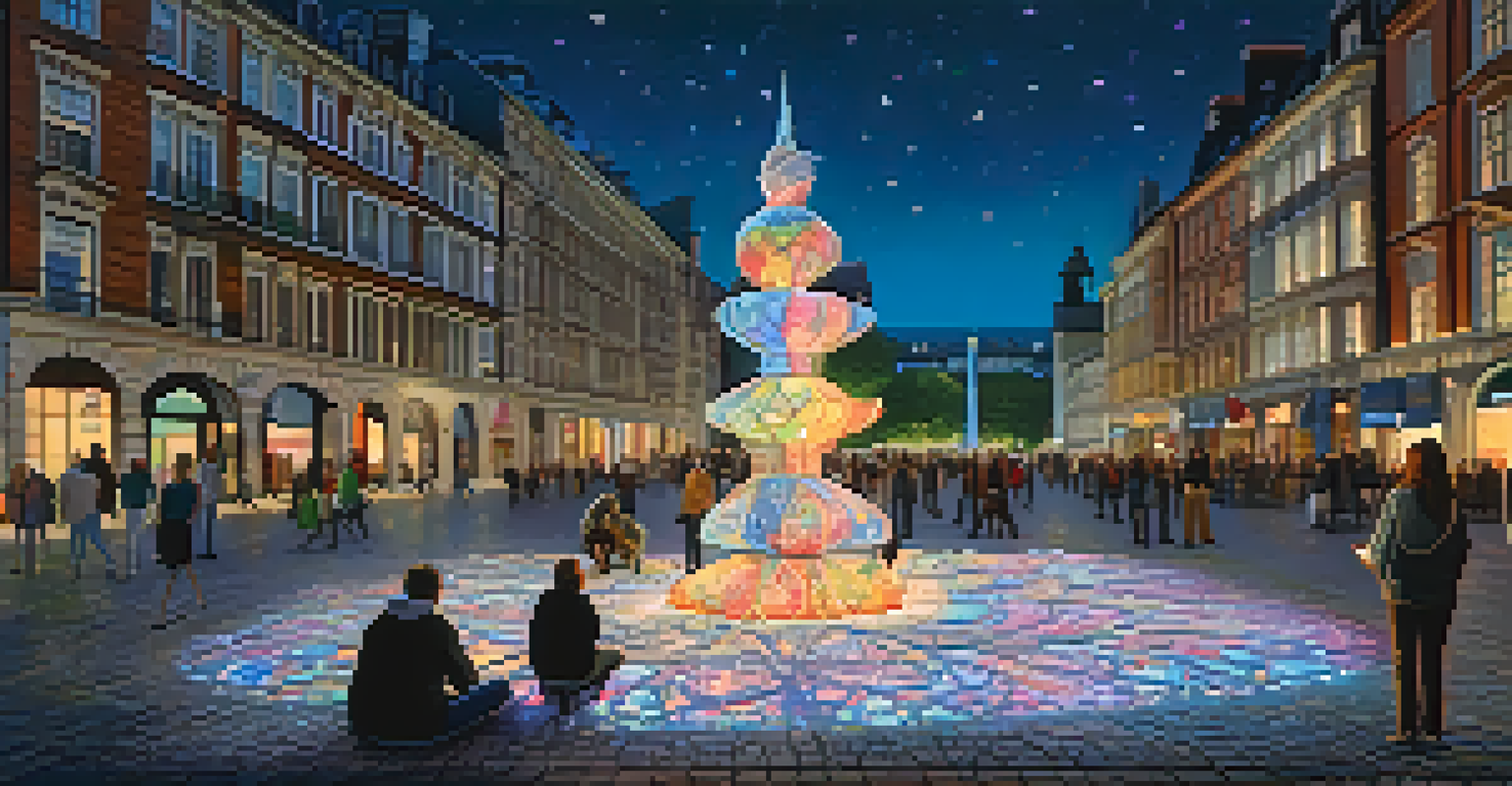Public Installations: Blending Art with Functionality

Understanding Public Installations and Their Impact
Public installations are art pieces that engage with the community in shared spaces, such as parks, plazas, and streets. They can take many forms, from sculptures and murals to interactive displays and functional furniture. The beauty of these installations lies in their ability to blend aesthetic appeal with practical use, enriching the environment while serving a purpose.
Public art is an essential part of a healthy society. It gives us a sense of place and identity.
These installations often aim to provoke thought or inspire conversations among passersby. For instance, a large mural might reflect the history of a neighborhood, sparking discussions about its evolution. This interaction between art and community fosters a sense of belonging and pride among residents.
Moreover, public installations enhance the overall experience of a space, making it more inviting and enjoyable. By transforming ordinary areas into vibrant hubs of activity, they encourage people to gather, socialize, and engage with their surroundings in new and meaningful ways.
The Role of Functionality in Public Art
While art is often seen as purely decorative, functionality plays a crucial role in public installations. Take, for example, a bench designed by a local artist that also serves as a mini-library. This piece not only provides a place to sit but also encourages reading and sharing books within the community.

Functional art can also include elements like lighting or signage, which guide and enhance the experience of a space. For instance, illuminated sculptures can create a magical atmosphere at night, while artistic wayfinding signs contribute to a sense of direction without compromising aesthetic appeal.
Community Impact of Public Art
Public installations engage communities, fostering pride and belonging through shared artistic experiences.
By integrating functionality into public installations, artists can create multi-dimensional experiences that serve both practical needs and artistic expression. This thoughtful approach ensures that art is not just seen but also felt and used, making it a valuable part of daily life.
Engagement and Community Participation in Design
One of the most exciting aspects of public installations is the opportunity for community participation in the design process. Many artists and city planners actively seek input from local residents, ensuring that the installations resonate with the community's identity and values. This collaborative approach fosters a sense of ownership and pride among community members.
Art is not what you see, but what you make others see.
For instance, a public mural project might involve local schools and organizations, allowing students to contribute their ideas and even paint sections of the mural. This not only brings diverse perspectives into the art but also creates lasting memories for those involved.
Engaging the community in the design process can lead to installations that are more meaningful and relevant. When people feel a connection to the art in their environment, they are more likely to appreciate and protect it, fostering a culture of care for public spaces.
Sustainability in Public Art Installations
As we become more aware of environmental issues, sustainability has emerged as a key consideration in public installations. Artists and designers are increasingly using eco-friendly materials and practices to create pieces that minimize environmental impact. For example, installations made from recycled materials not only reduce waste but also tell a compelling story about resourcefulness.
Moreover, sustainable public art can also include elements that promote ecological awareness, such as green roofs or rain gardens integrated into sculptures. These installations not only beautify a space but also contribute positively to the local ecosystem, supporting biodiversity and improving air quality.
Functionality Enhances Artistic Value
Integrating functionality into public art transforms it into a valuable resource that serves practical needs while providing aesthetic enjoyment.
By prioritizing sustainability, public installations can inspire communities to think more critically about their environmental footprint. They serve as a reminder that art can be both beautiful and responsible, encouraging a harmonious relationship between culture and nature.
Cultural Representation Through Public Installations
Public installations offer a unique platform for cultural expression and representation. They can celebrate the heritage and stories of diverse communities, often serving as a visual narrative of local history. For example, a sculpture honoring indigenous peoples can provide context about their significance and contributions to the area.
Through artistic expression, these installations can address social issues and promote inclusivity. They invite dialogue around topics such as identity, equality, and community, fostering a deeper understanding among different groups.
When public art reflects the diversity of a community, it creates a richer, more inclusive environment. This representation can empower marginalized voices and encourage a sense of pride in one's culture, ultimately contributing to social cohesion.
The Transformation of Urban Spaces Through Art
Public installations have the remarkable ability to transform urban spaces into lively cultural hubs. Rather than merely serving as thoroughfares, streets and squares become venues for community engagement and artistic expression. A well-placed sculpture or mural can change the way people interact with their surroundings, creating a sense of place where none existed before.
For instance, an underutilized park can be revitalized through the addition of interactive art installations, drawing visitors who may have previously overlooked the area. This transformation can lead to increased foot traffic, boosting local businesses and community engagement.
Sustainability in Public Installations
Eco-friendly practices in public art not only beautify spaces but also promote environmental awareness and responsibility.
As urban areas continue to grow and evolve, public art plays a key role in shaping their identity. By infusing creativity into the fabric of cities, public installations help to create vibrant, dynamic spaces that reflect the community's character.
Challenges and Considerations in Public Installations
While public installations can greatly enrich a community, they also come with challenges. Issues such as funding, maintenance, and community approval can often complicate the installation process. Artists and planners must navigate these hurdles while ensuring that the final product remains true to the artistic vision.
Moreover, public art can sometimes provoke mixed reactions, particularly if it challenges social norms or represents controversial themes. Artists must be prepared for differing opinions and engage in constructive dialogues with the community to foster understanding and acceptance.

Ultimately, addressing these challenges requires a collaborative spirit and a willingness to adapt. When approached thoughtfully, public installations can become cherished landmarks that celebrate a community's unique character and aspirations.